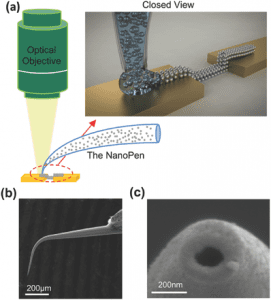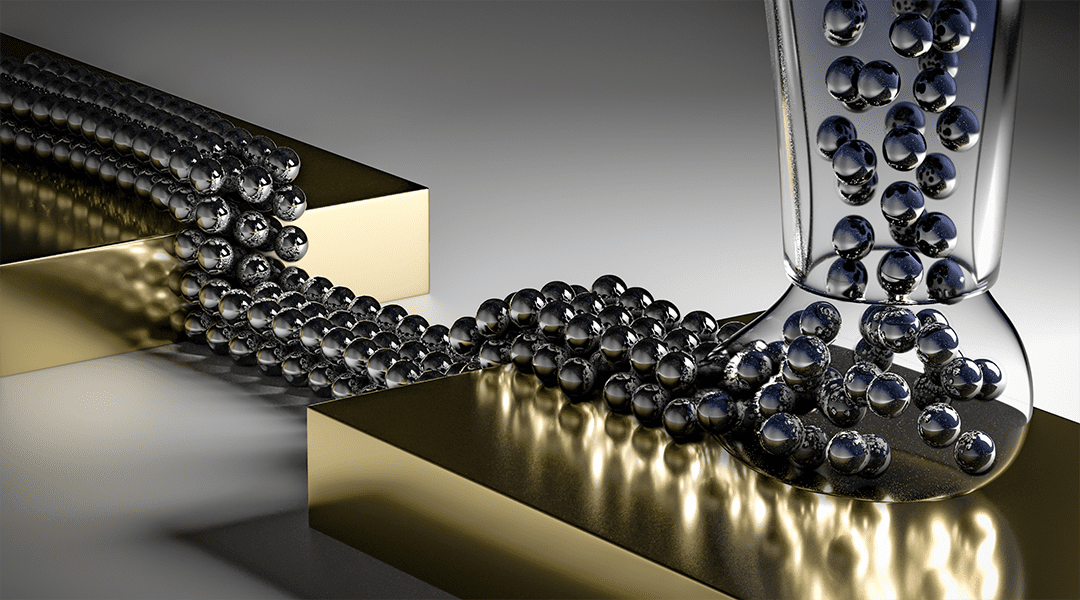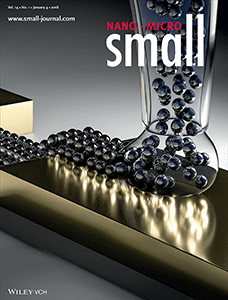Fountain pen nanolithography (FPN), named after the fountain pen, is a printing method, which like its namesake, utilizes a reservoir filled with an ink.
While the fountain pen reservoir contains pigment ink for writing, the reservoir in FPN is a nanopipette that can contain chemical solutions or liquids for printing. These solutions can undergo nanochemical changes during the lithography process, resulting in the desired functional lines and structures.
Printed electronics is a field in continual development, where new materials and methods are needed to enable the production of novel electrical components with micro and nanoscale size. This need opens the door for the production of printed electronics using FPN.

Fountain pen nanolithography system. More information here.
In printing components for electronics, it is desirable to have flexibility in placement of lines and structures, while enabling the use of various chemical inks on a variety of substrates is important.
Professor Aaron Lewis and co-workers developed an approach using FPN, which addresses the above needs, to print electrically conductive lines and interconnections, using both nanoparticle dispersions and salt solutions as inks. They successfully and effectively print metallic lines using FPN, utilizing solution chemistry.
Control over the line widths was demonstrated, and lines from 15 nm to over 1000 nm were produced. Line produced showed micrometer lengths, consistency of line dimensions, precise placement, and conductivity. Similar to the reservoir in fountain pens, the nanopipette reservoir enables numerous lines to be printed without refilling.
Practically, this technology could be expanded to the production of conductors and actuators, correction of flat panel displays, and mask repair applications.
For more information, please read the original research published here.


















